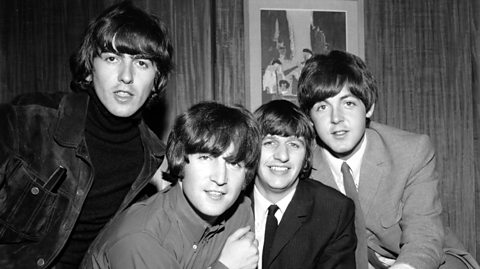There are few things in life more rewarding than curling up in bed after a long day.
The majority of beds may sit in one room for years and barely be noticed by anyone. But that's not true of all of them.
As ±«Óătv Bitesize shows, some beds have found themselves a particularly snuggly corner in history.
Stone beds in Skara Brae
These days, we can have beds that change position to align with our bodies, massage our backs and even have a TV rise up out of the footboard. It was a little different 5,000 years ago.
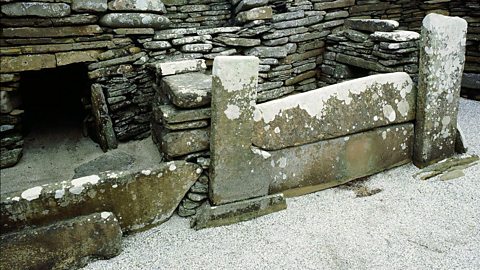
Skara Brae is a neolithic village in the Orkney Islands, off Scotlandâs north coast. The prehistoric settlement first came to (relatively) modern day attention when a huge storm hit the islands in 1850, which swept away large amounts of sand to reveal the houses beneath.
Over time, it was discovered that a farming community kept cows, sheep and pigs at Skara Brae. Fish from the sea would have been a regular meal for the families - but what about the beds?
Like much of the furniture in Skara Brae, they were made from stone. ±«Óătvs were found to have two beds: one for the male occupant, the other for the female. To make bedtimes a little more comfortable, the stone âmattressâ would be covered with straw and heather from the land nearby. The dimensions of the stone beds look similar to those we use today, suggesting that some things havenât changed over the centuries (even though the beds we have today are perhaps a little springier) - but as the next example shows, some beds throw the rulebook away when it comes to size.
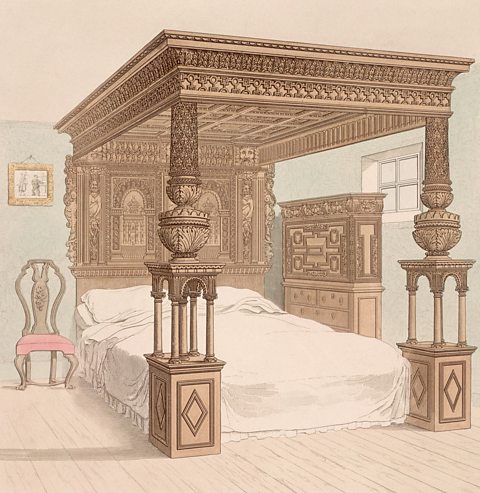
The Great Bed of Ware
Currently on display at the Victoria & Albert Museum (V&A), it isnât the owner of the Bed of Ware which has intrigued people over the centuries, itâs the size.
The four-poster bed, made in around 1590, is more than three metres wide, meaning it would struggle to fit into some bedrooms. Its origins are a little unclear but it is thought to have been built as a way of drawing guests to an inn in Ware, Hertfordshire. The establishment was often a stop-over for travellers making the journey from London to destinations further north and it became a custom for any guests who slept in the enormous bed to carve their initials into the bedframe or leave wax seals on it. The woodwork in the bedâs structure features elaborate carving of leaves, lions and human figures. Traces of paint also suggest that the bed may have been brightly coloured at one point.
The Bed of Ware developed such a reputation that in William Shakespeareâs Twelfth Night, the character Sir Toby Belch says a particular sheet of paper is âbig enough for the Bed of Wareâ. The A performer or writer skilled in writing or expressing humour. It can also apply to expressing humour through art. Ben Johnson referred to it as the Great Bed of Ware in 1609, a title that stuck.

Vincent van Goghâs bed in Arles
This famous item of bedroom furniture can currently be viewed only as part of a painting but it may still exist - somewhere.
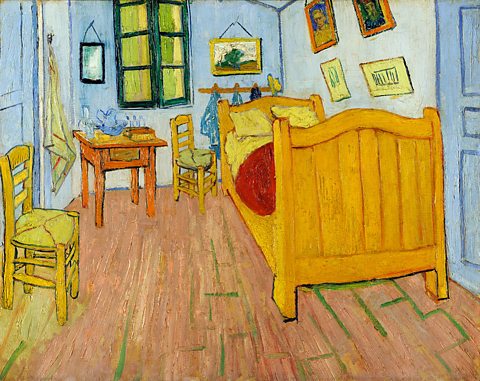
In 1888, the artist Vincent Van Gogh rented what was known as the Yellow House in the French city Arles. His bedroom there was a simple one, with what could be described as basic furnishing, and decorated with some of the artistâs own works.
The painting became an influential representation of Van Goghâs work while the bed itself may have had an interesting legacy. Research by Van Gogh expert Martin Bailey suggested the bed was later disassembled to be sent to Auvers-sur-Oise, a village north of Paris where the artist was working. Sadly, Van Gogh died around this time and the bed was inherited by Theo, his brother. The bed was then owned by Theoâs son, also called Vincent, at his home outside Amsterdam in the Netherlands.
Vincentâs son, Johan, told Bailey that his father had donated the bed to help those affected by wartime bombing, and that it had gone to the east of the country. Bailey tracked the donations as far as Boxmeer, a town south of the Dutch city Arnhem. In 2016, attempts were made to check if the bed survived somewhere in Boxmeer, but the search was unsuccessful.
John Lennon and Yoko Onoâs protest in bed
Why make one bed famous, when you can put two into the history books?
In 1969, musician John Lennon, a member of The Beatles, married artist Yoko Ono. While many newlywed couples like to spend their honeymoon taking in the sights of a new city or relaxing on the beach, John and Yoko took the opportunity to protest against the war in Vietnam.
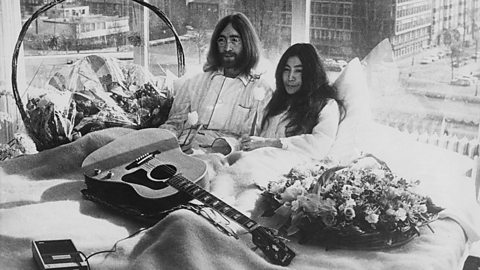
While staying at the Amsterdam Hilton in March, the couple announced they would be staying in bed all week as a peaceful protest against the conflict. The media were welcome to publicise their demonstration which became known as a âbed-inâ.
A few months later, Lennon and Ono checked in to room 1742 of the Queen Elizabeth Hotel in Montreal, Canada. This was the beginning of another week-long bed-in. During the protest, they had visitors who supported many causes, including civil rights. It was here that a recording of the song Give Peace a Chance was made, with Lennon playing guitar while sitting on the bed. One of the blankets on the bed at the time, captured on a film recording, featured the words All You Need is Love, the title of a 1967 hit by The Beatles. The blanket is now in the Museum of Liverpoolâs collection.
This article was published in August 2023.
The Iron Throne and five other famous chairs
Believe it or not, Game of Thrones doesn't have a monopoly on cool seats.

Can you match the Shakespeare quote to the play?
Test your knowledge of William Shakespeare's most famous works.

The fab-ulously difficult Beatles quiz
Are you a Beatles super-fan? Test your knowledge by guessing which of the Fab Four said what.
